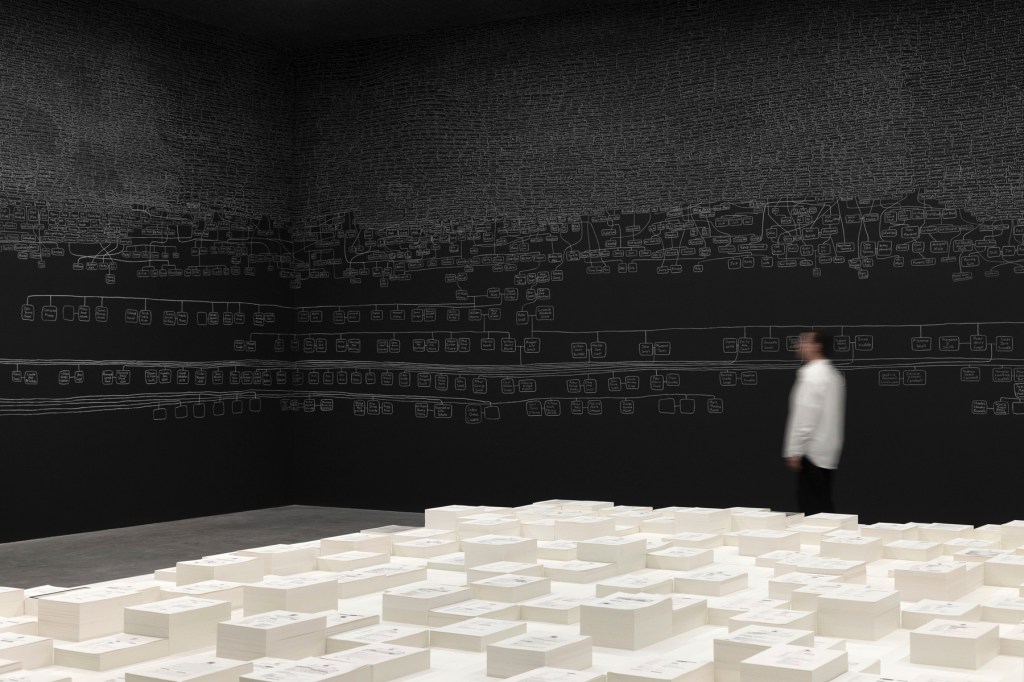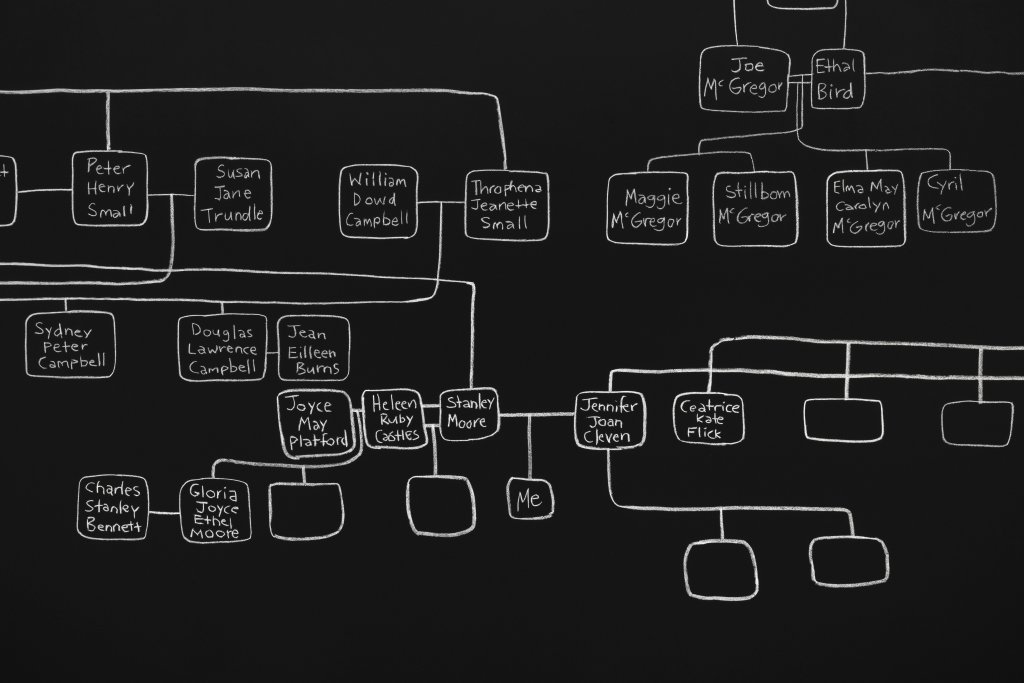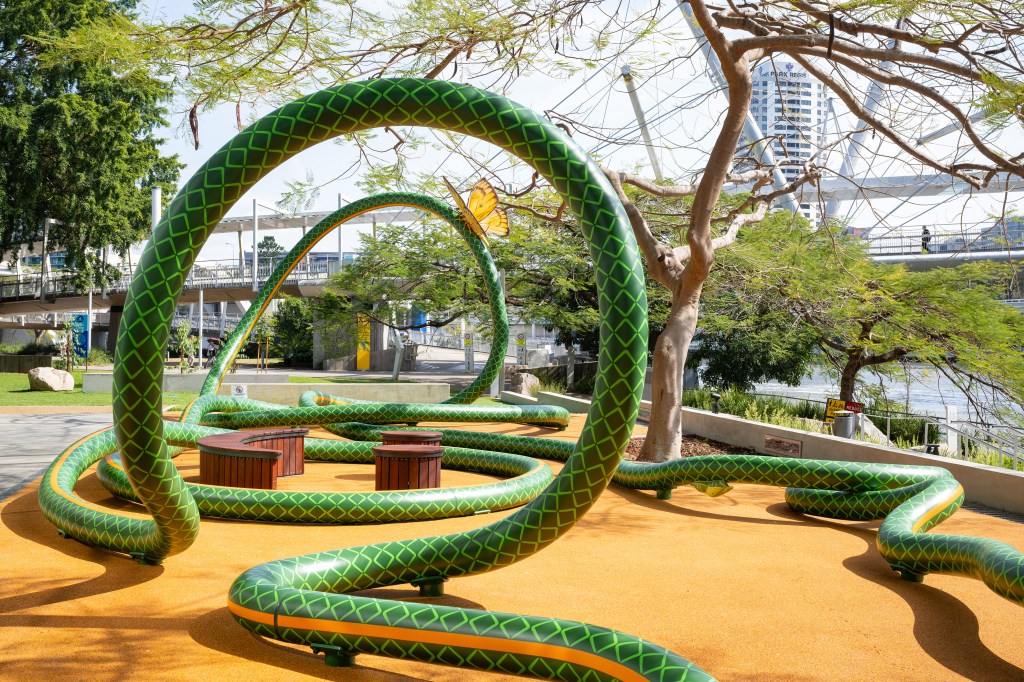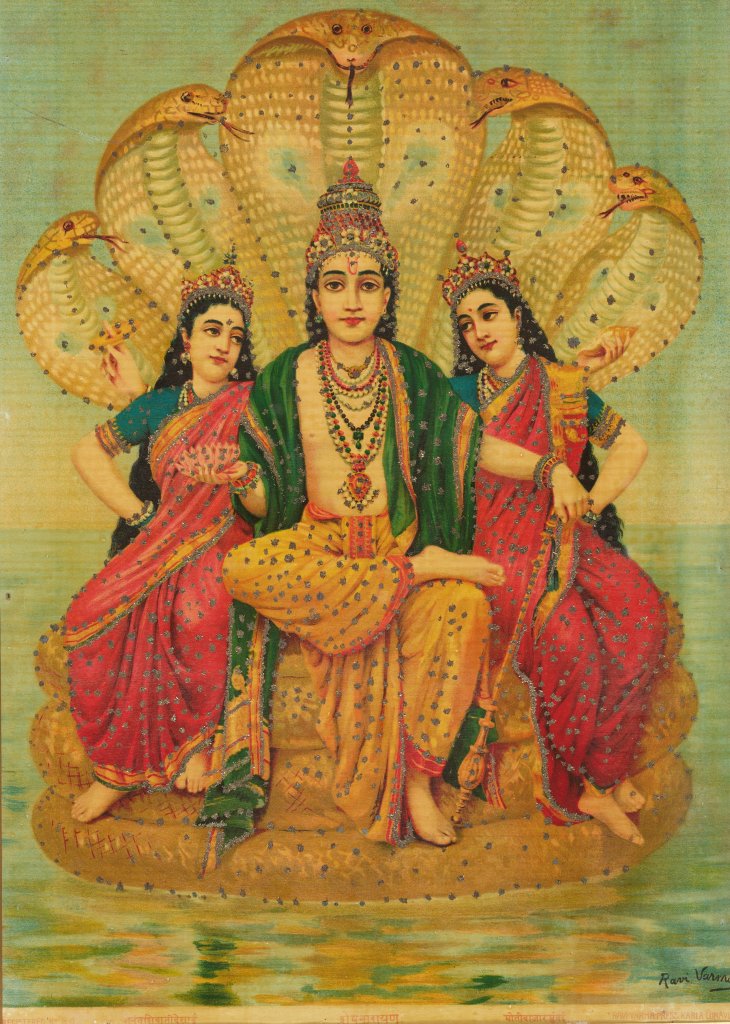From Venice to Brisbane: Archie Moore’s award-winning installation returns home
Archie Moore triumphed at the Venice Biennale and now his award-winning major installation is back home in Brisbane at the Gallery of Modern Art.

Standing in a gallery at Brisbane’s Gallery of Modern Art viewing Archie Moore’s incredible installation kith and Kin, I feel what the English poet Philip Larkin termed “awkward reverence”.
The phrase comes from his poem Church Going. Larkin felt awkward, as a non-believer in a sacred space.
One feels similarly awkward regarding Moore’s installation kith and kin because the work (displayed at La Biennale de Venezia in 2024), as well as being a memorial is a damning indictment of colonisation and the treatment of indigenous Australians.
If, like me, you couldn’t quite make it to Venice to see the work last year, you can now experience it upstairs at Brisbane’s Gallery of Modern Art. This is the first time the artwork, by Kamilaroi/Bigambul artist Archie Moore has been displayed since it secured the prestigious Golden Lion Award for Best National Participation in Venice last year.


You might like
Commissioned by Creative Australia and curated by Ellie Buttrose, curator of contemporary Australian art, QAGOMA, for the Australian Pavilion at Venice, the work was subsequently gifted to the collections of both QAGOMA and Tate in the UK by Creative Australia on behalf of the Australian Government.
For us to have this work, along with the Tate in Britain, is a big deal. QAGOMA director Chris Saines describes it as a “deeply affecting artwork”.
“It comprises a vast genealogical chart capturing Archie Moore’s First Nations Australian and convict British and Scottish connections spanning more than 2400 generations over 65,000 years,” Saines explains.
“Over several weeks , Archie and a team of installers have meticulously hand-drawn this ancestral map in chalk across a large expanse of four walls in a stand-alone room specially built to replicate the internal dimensions of the Australian Pavilion in Venice. The work also confronts the ongoing legacies of Australia’s colonial history and the over-incarceration of First Nations people, with a collection of coronial reports on deaths in custody suspended above a memorial pool in the centre of the room.
“When I first encountered Moore’s installation in the Australian Pavilion at the Venice Biennale in 2024, it was both impressive and moving: resonating with the weight of history, the experience stilled into silence and reflection. It’s an unimaginable endeavour to map a personal genealogy through more than 2000 generations and kith and kin powerfully summons an extraordinary image of human connection through deep time.”
The memorial pool above which the coronial reports are suspended adds a meditative feeling to the space and Moore, who lives on Brisbane’s bayside, says he meant to create a somewhat scared space. It’s confronting on the one hand but peaceful and deeply moving on the other hand. It’s a memorial for First Nations individuals who have died in police custody and it also outlines the vast swathe of time Indigenous Australians have lived on this continent.
Subscribe for updates
It bowled them over in Venice and we are so lucky to be one of the custodians for this work, which will attract art lovers from all over Australia. It’s quite the coup for QAGOMA and admission is free.
In fact, there are currently a swathe of free exhibitions on at both the Queensland Art Gallery and Gallery of Modern Art – and outside is one of the most engaging.

If you have walked by recently, you will have noticed the artist-designed play sculpture in the form of a giant 119m-long garden hose. Now on permanent display – and being constantly crawled over by kids – The Big Hose is the collaborative creation of Australian artists, our own Tony Albert and Sydney-sider Nell. The work sits out in front of the bistro at Kurilpa Point on the banks of the Brisbane River (Maiwar), GOMA’s “front yard” according to Saines.
Fabricated by the UAP Foundry in Brisbane, it is an amazing and fun large-scale installation in the tradition of big things such as The Big Pineapple and other icons. Artist Tony Albert points out that this spot was also the Story Place of Kuril, the water rat, and there is a little hideout for Kuril within the work.

Also recently launched is an exhibition featuring a collection of Raja Ravi Varma embellished oleographs, now displayed at QAG after a world-leading conservation and research exchange with India. A singular collection of 48 uniquely embroidered Raja Ravi Varma oleographs – prints designed to resemble oil paintings – were acquired by QAGOMA through the Henry and Amanda Bartklett Trust in 2024.
Raja Ravi Varma (1848-1906) was a renowned Indian artist whose work gave vivid form to Hindu gods and goddesses, aristocrats and maharajas, as well as scenes from everyday life. His works opened access to images of the deities at a time when temples were reserved for the elite.
A selection of the Raja Ravi Varma Press oleographs are a highlight of QAGOMA’s free exhibition, The God of Small Things: Faith and Popular Culture, which will be on show until October 2026.
At the moment you can also see Under a Modern Sun: Art in Queensland 1930s-1950s and Pat Hoffie: I have loved/I love/I will love, also on at QAG and free.
It’s an embarrassment of riches at QAGOMA right now when you also add the amazing Wonderstruck, featuring amazing works from the QAGOMA collection. That one closes October 6, though, so you better hurry if you want to catch it. For the others, there’s plenty of time. May I suggest multiple visits? You know it makes sense.
qagoma.qld.gov.au
Free to share
This article may be shared online or in print under a Creative Commons licence

